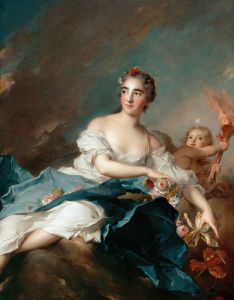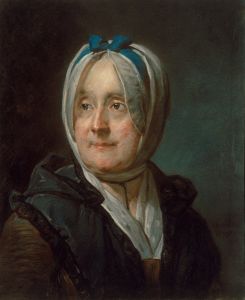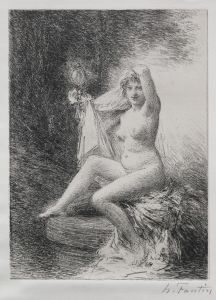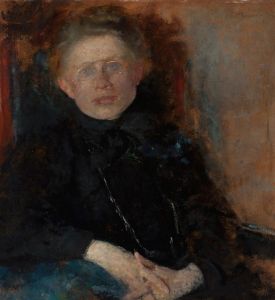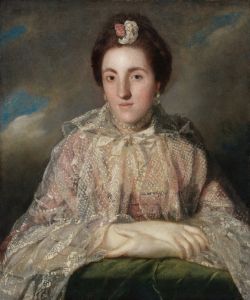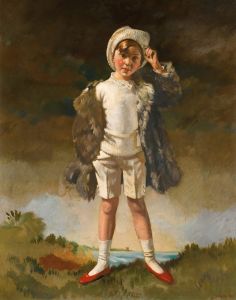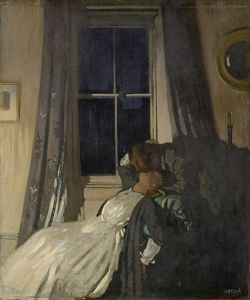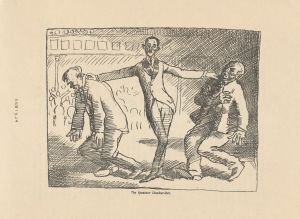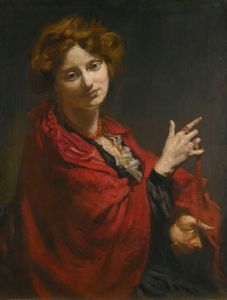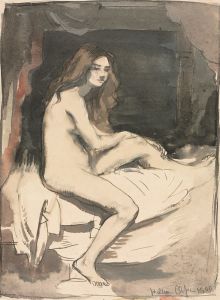
Portrait Of Rose, Fourth Marchioness Of Headfort
A hand-painted replica of William Orpen’s masterpiece Portrait Of Rose, Fourth Marchioness Of Headfort, meticulously crafted by professional artists to capture the true essence of the original. Each piece is created with museum-quality canvas and rare mineral pigments, carefully painted by experienced artists with delicate brushstrokes and rich, layered colors to perfectly recreate the texture of the original artwork. Unlike machine-printed reproductions, this hand-painted version brings the painting to life, infused with the artist’s emotions and skill in every stroke. Whether for personal collection or home decoration, it instantly elevates the artistic atmosphere of any space.
"Portrait of Rose, Fourth Marchioness of Headfort" is a painting by the renowned Irish artist Sir William Orpen. This portrait features Rose Boote, who became the fourth Marchioness of Headfort upon her marriage to Geoffrey Taylour, the 4th Marquess of Headfort. The painting is a notable example of Orpen's skill in portraiture and his ability to capture the elegance and personality of his sitters.
William Orpen (1878-1931) was a prominent figure in the early 20th-century art world, known for his portraits, war paintings, and contributions to the British art scene. Born in Stillorgan, County Dublin, Orpen studied at the Metropolitan School of Art in Dublin and later at the Slade School of Fine Art in London. He became a member of the Royal Academy and was knighted in 1918 for his services as an official war artist during World War I.
Rose Boote, the subject of this portrait, was an actress before her marriage to Geoffrey Taylour. She was known for her beauty and charm, which Orpen successfully captured in this painting. The portrait is characterized by its refined elegance and the meticulous attention to detail that Orpen was known for. The composition and use of light highlight Rose's graceful demeanor and sophisticated attire, making it a striking representation of her status and personality.
The painting is executed in oil on canvas, a medium Orpen frequently used for his portraits. The choice of colors, the texture of the brushstrokes, and the overall composition reflect Orpen's mastery of the medium and his ability to convey the character and presence of his subjects. The background of the portrait is kept relatively simple, ensuring that the focus remains on the Marchioness and her expressive features.
"Portrait of Rose, Fourth Marchioness of Headfort" is part of Orpen's extensive body of work that includes portraits of notable figures from various walks of life, including politicians, military leaders, and members of the aristocracy. His portraits are celebrated for their psychological depth and the way they capture the essence of the individuals he painted.
This particular painting is held in a private collection, which means it is not readily accessible to the public. However, it has been exhibited on various occasions, allowing art enthusiasts and scholars to appreciate Orpen's craftsmanship and the historical significance of the portrait.
In summary, "Portrait of Rose, Fourth Marchioness of Headfort" by William Orpen is a distinguished example of early 20th-century portraiture. It showcases Orpen's exceptional talent in capturing the likeness and personality of his subjects, as well as his ability to convey the social status and elegance of the Marchioness. The painting remains an important piece within Orpen's oeuvre and a testament to his legacy as one of the leading portrait artists of his time.





